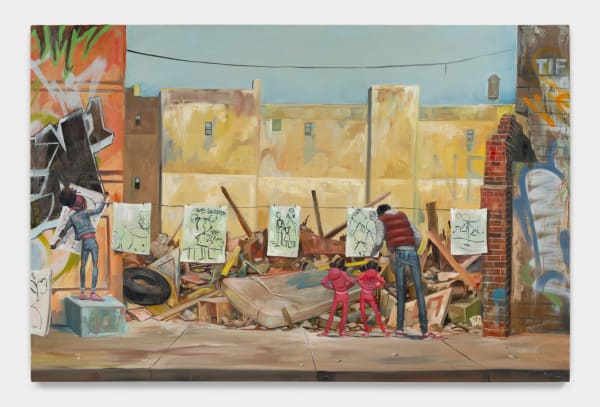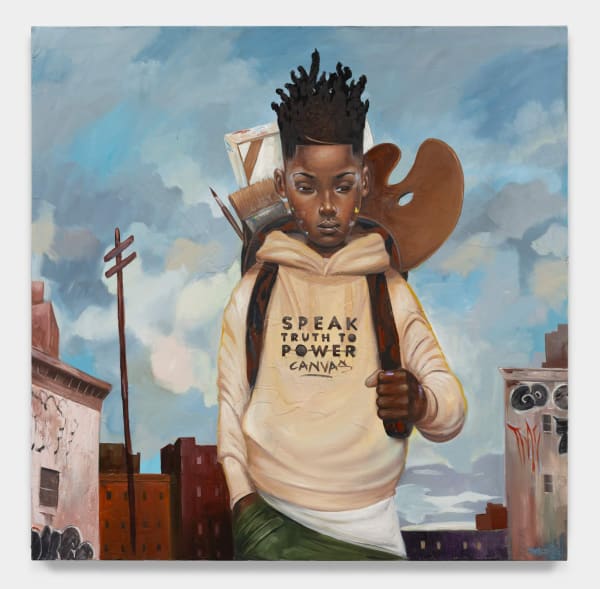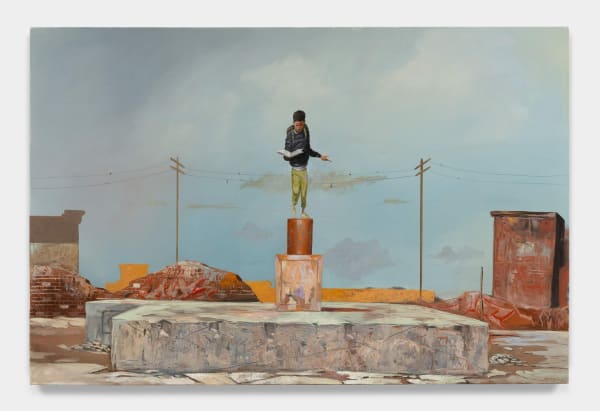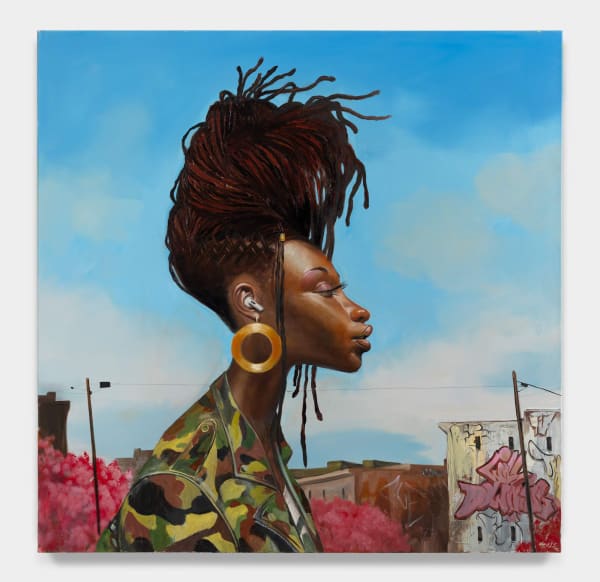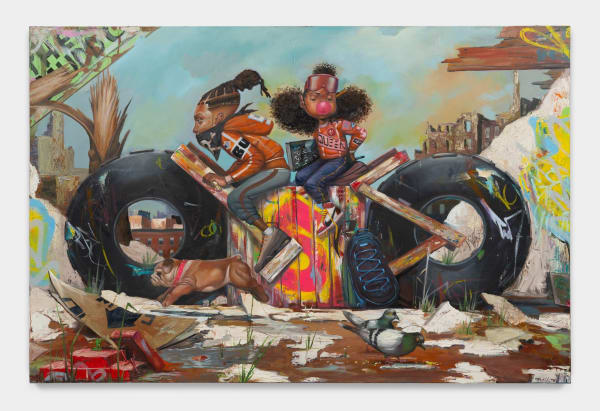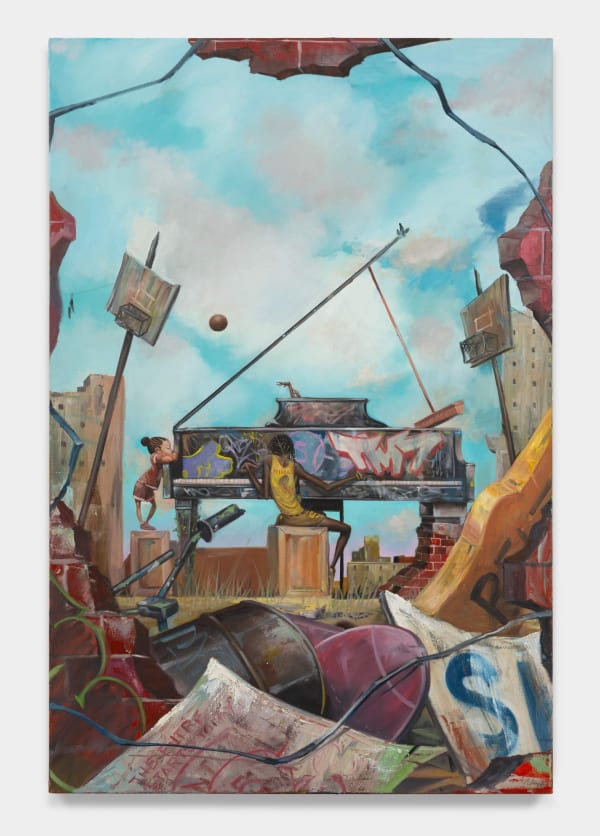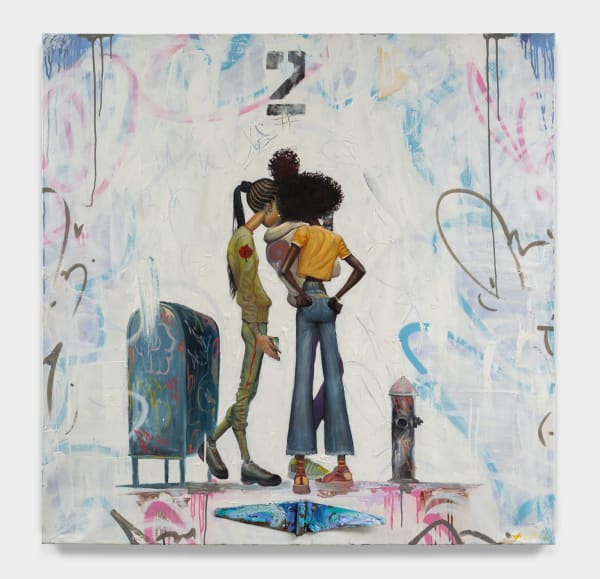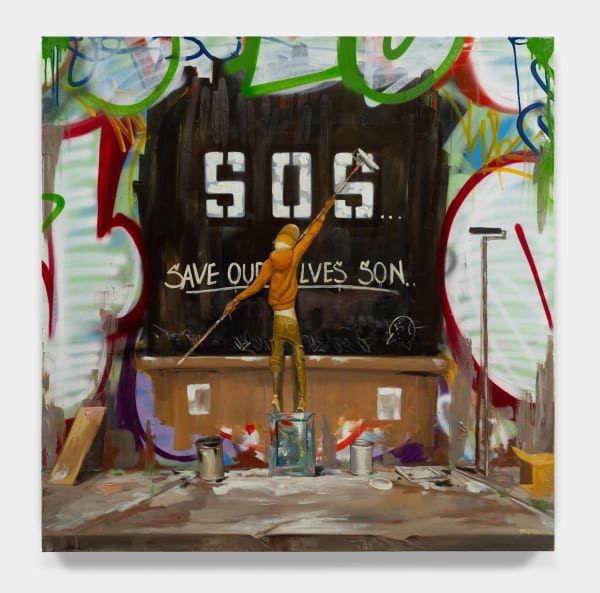Brilliance Behind the Line: Frank Morrison
Arbitrary lines build our nations, map our territories, and divide our cities. They allow indifference and prejudice to be made manifest through concrete and contracts. Faced with an institutionalized exile, many find their extraordinary talents overlooked as they are cast into the shadows of our society. Frank Morrison, knowing what it was like to grow up in poverty in a community excluded through the lines of public infrastructure, now addresses the way these ‘Red Line’ communities were in truth incubators for some of the most influential facets of Black excellence.
‘Red Line’ communities were areas of predominantly Black populations, demarcated by governing bodies to keep them separate and subjugated. This inevitably led to systemic injustices such as poverty, drug infestations, and financial oppression, as well as public infrastructure that perpetuated intergenerational suffering. They became spaces of decay, ruins within a modern urban environment. Yet Morrison found his inspiration as a painter, street artist, and an original participant of Hip Hop culture among them. Behind the lines that were drawn, brilliance flourished. “Brilliance Behind the Line” showcases resilience. While his work explores the struggles within the roots of contemporary culture, he protects the black identity, sharing its beauty and amplifying its voice in the wake of the mainstream seeking exploitation and profit.
The exhibition is comprised of Morrison’s recent “Foundations” series. The series of works on display builds upon the themes of his concurrent exhibition, “Wonder World”, on view at Richard Beavers Gallery, Brooklyn. “Wonder World” explores the youth immersed in these tumultuous environments, the duality of the hopes and threats that face them as they pursue their imaginative desires, and aspirations for the future before they bear the brunt of societal pressures. “Brilliance Behind the Line” dives deep into the settings that spawn these tumultuous citations and yet are the home to untapped genius.
The environments Morrison constructs are dilapidated. They are full of debris, unmanicured neighborhoods, seemingly in a state of decline. While we are familiar to everyone, we are displaced. This could be today, last year, or decades in the past. Conversely, they could just as easily be tomorrow or years in the future. The gloom he casts over the scenes is a reminder that not all people start their lives in a state of privilege. Some emerge from the womb into the struggling end of disparities of wealth, health, and even justice.
When, or if, these narratives emerge, this is how they are portrayed. Negativity runs rampant. The media finds ways to distort and profit. The falsehoods replace the truth of their history. Morrison subverts this flow of knowledge. He does not neglect the tragic truths but uses the subjects, symbols, and evocative nature of his paintings to show the soulfulness of the spirit that thrives in the face of these hardships.
“There was no civil rights movement for the arts,” claims Morrison. Reflecting throughout the ages, the discrediting of the talents he experienced as a self-taught artist led him to dive deeper into the relationship between race and our art historical lineage, coming to recognize that the foundations of our visual language and artistry, while neglected and broken, persevered. While Morrison began to take from the Renaissance and Raphaelites in his play of oils, the Romanticists like Goya and El Greco in their expressive depictions of social turmoil, and even the use of pattern and gesture like the modern Abstract artists, these were all realms of art that rejected Black voices.
The “Foundation” series exemplifies his aesthetic desire to canonize black ingenuity. While taking inspiration from illustrators such as Al Hirschfeld and Miguel Covarrubias, Morrison draws heavily from the work of the NeoMannerists and their pioneer, Ernie Barnes. The movement brought a new lens, color, and interpretation of the body that was distinct to the African-American experience. Unlike other movements, it made its way into the annals of Western art history. With his transformative nature, imbuing the stories of the everyday with a magical aura, Morrison reconceived the approach for his modern era, using styles and references that show the progression of time, whether that be growth or decay within his communities.
His commitment to a documentary approach, capturing specifics of his surroundings, connects his series to the work of the notorious Ashcan School of the early 20th century. These artists dove into the realities of daily life in New York City, looking at the poverty and upheaval of a transitional era in our history.
The raw grittiness of their depictions of social unrest and disadvantaged neighborhoods finds its way into Morrison’s work. He uses their approach to realism to shine a spotlight on the systemic racism, ingrained fear, and confusion instilled by this hate that often snuffs out the creativity of those in Red Line communities. Morrison, however, keeps glimmers of hope, reminders of their excellence, within the foundations of these neighborhoods.
He explores specific elements of Black culture that escaped the Red Lines. Utilizing his skills as a graffiti and street artist, he shows the evolution of Hip Hop, from a counterculture to a part of the contemporary consciousness, as emerging from the rubble of Morrison’s foundations. Through his colorful expressions, contorted bodies, and sense of movement, the ability to devise an entire cultural revolution with no resources at their disposal. He asks us to contemplate how we can admire, preserve, and glorify the ruins of ancient civilizations, then why should we not undertake the same type of remembrance for the majesty that emerges from the remnants of urban decay?
The exhibition is a promise for the future. Works like “Basic Training” reveal a confluence of art historical imagery fused with the names of the children who had their lives taken unjustly. It illuminates the struggle to overcome the limitations of our circumstances to find success, greatness, and, for some, to merely survive. “If I Could, You Can”, declares Morrison. The communities behind the Red Line are designed to fail, tear us down, and discourage us. The ingenuity that has helped grow, sustain, and propel Black Culture is inherent to our DNA. As we travel from painting to painting, it becomes clear that there is vast potential that is continually overlooked. It is our job to dismantle these broken foundations, take a step over the line, and see what brilliance blooms despite being left in the dark.


